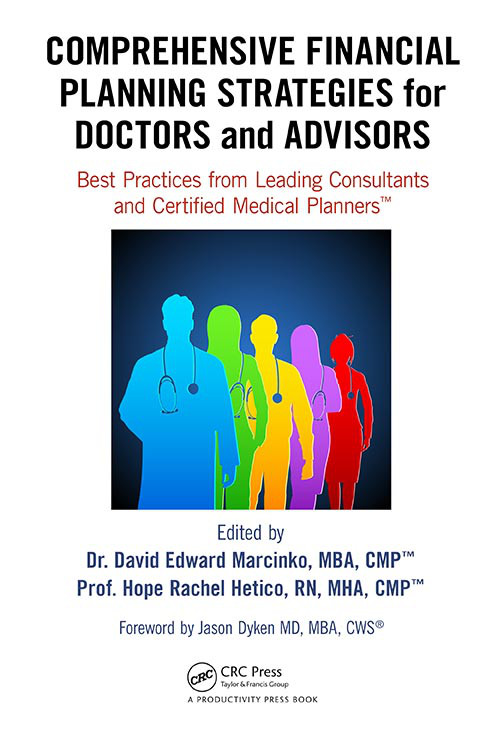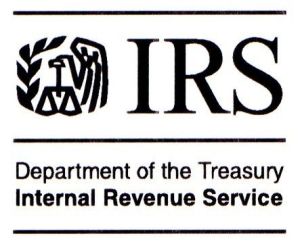
For Medical Professionals … and Us All
[By PERRY D’ALESSIO CPA] http://www.dalecpa.com
A SPECIAL ME-P REPORT
 Year-end tax planning is especially challenging this year, for EVERYONE, because Congress has yet to act on a host of tax breaks that expired at the end of 2013. Some of these tax breaks may be retroactively reinstated and extended, but Congress may not decide the fate of these tax breaks until the very end of this year (and, possibly, not until next year).
Year-end tax planning is especially challenging this year, for EVERYONE, because Congress has yet to act on a host of tax breaks that expired at the end of 2013. Some of these tax breaks may be retroactively reinstated and extended, but Congress may not decide the fate of these tax breaks until the very end of this year (and, possibly, not until next year).
For Individuals
These breaks include, for individuals: the option to deduct state and local sales and use taxes instead of state and local income taxes; the above-the-line-deduction for qualified higher education expenses; tax-free IRA distributions for charitable purposes by those age 70- 1/2 or older; and the exclusion for up-to-$2 million of mortgage debt forgiveness on a principal residence.
For Businesses
For businesses, tax breaks that expired at the end of last year and may be retroactively reinstated and extended include: 50% bonus first year depreciation for most new machinery, equipment and software; the $500,000 annual expensing limitation; the research tax credit; and the 15-year write-off for qualified leasehold improvement property, qualified restaurant property, and qualified retail improvement property.
Bigger Earners
Higher-income-earners, like some doctors, have unique concerns to address when mapping out year-end plans. They must be wary of the 3.8% surtax on certain unearned income and the additional 0.9% Medicare (hospital insurance, or HI) tax that applies to individuals receiving wages with respect to employment in excess of $200,000 ($250,000 for married couples filing jointly and $125,000 for married couples filing separately).
The surtax is 3.8% of the lesser of: (1) net investment income (NII), or (2) the excess of modified adjusted gross income (MAGI) over an un-indexed threshold amount ($250,000 for joint filers or surviving spouses, $125,000 for a married individual filing a separate return, and $200,000 in any other case). As year-end nears; a taxpayer’s approach to minimizing or eliminating the 3.8% surtax will depend on his estimated MAGI and net investment income (NII) for the year. Some taxpayers should consider ways to minimize (e.g., through deferral) additional NII for the balance of the year, others should try to see if they can reduce MAGI other than NII, and other individuals will need to consider ways to minimize both NII and other types of MAGI.
The additional Medicare tax may require year-end actions. Employers must withhold the additional Medicare tax from wages in excess of $200,000 regardless of filing status or other income. Self-employed persons must take it into account in figuring estimated tax. There could be situations where an employee may need to have more withheld toward year end to cover the tax.
For example, an individual earns $200,000 from one employer during the first half of the year and a like amount from another employer during the balance of the year. He would owe the additional Medicare tax, but there would be no withholding by either employer for the additional Medicare tax since wages from each employer don’t exceed $200,000.
Also, in determining whether they may need to make adjustments to avoid a penalty for underpayment of estimated tax, individuals also should be mindful that the additional Medicare tax may be over-withheld. This could occur, for example, where only one of two married spouses works and reaches the threshold for the employer to withhold, but the couple’s income won’t be high enough to actually cause the tax to be owed.
The Checklist[s]
I’ve have compiled a checklist of additional actions, for ME-P readers, based on current tax rules that may help you save tax dollars if you act before year-end. Not all actions will apply in your particular situation, but you (or a family member) will likely benefit from many of them.
***

[Future High Income-Earners?]
***
Year-End Tax Planning Moves for Individual Medical Providers
Realize losses on stock while substantially preserving your investment position. There are several ways this can be done.
For example, you can sell the original holding, then buy back the same securities at least 31 days later. It may be advisable for us to meet to discuss year-end trades you should consider making.
Let’s consider the following:
- Postpone income until 2015 and accelerate deductions into 2014 to lower your 2014 tax bill. This strategy may enable you to claim larger deductions, credits, and other tax breaks for 2014 that are phased out over varying levels of adjusted gross income (AGI). These include child tax credits, higher education tax credits, and deductions for student loan interest. Postponing income also is desirable for those taxpayers who anticipate being in a lower tax bracket next year due to changed financial circumstances. Note, however, that in some cases, it may pay to actually accelerate income into 2014. For example, this may be the case where a person’s marginal tax rate is much lower this year than it will be next year or where lower income in 2015 will result in a higher tax credit for an individual who plans to purchase health insurance on a health exchange and is eligible for a premium assistance credit.
- If you believe a Roth IRA is better than a traditional IRA, and want to remain in the market for the long term, consider converting traditional-IRA money invested in beaten-down stocks (or mutual funds) into a Roth IRA if eligible to do so. Keep in mind, however, that such a conversion will increase your adjusted gross income for 2014. If you converted assets in a traditional IRA to a Roth IRA earlier in the year, the assets in the Roth IRA account may have declined in value, and if you leave things as is, you will wind up paying a higher tax than is necessary. You can back out of the transaction by re-characterizing the conversion, that is, by transferring the converted amount (plus earnings, or minus losses) from the Roth IRA back to a traditional IRA via a trustee-to-trustee transfer. You can later reconvert to a Roth IRA, if doing so proves advantageous.
- It may be advantageous to try to arrange with your PHO, medical group, clinic, hospital or employer to defer a bonus that may be coming your way until 2015.
- Consider using a credit card to pay deductible expenses before the end of the year. Doing so will increase your 2014 deductions even if you don’t pay your credit card bill until after the end of the year.
- If you expect to owe state and local income taxes when you file your return next year, consider asking your employer to increase withholding of state and local taxes (or pay estimated tax payments of state and local taxes) before year-end to pull the deduction of those taxes into 2014 if doing so won’t create an alternative minimum tax (AMT) problem.
- Take an eligible rollover distribution from a qualified retirement plan before the end of 2014 if you are facing a penalty for underpayment of estimated tax and having your employer increase your withholding isn’t viable or won’t sufficiently address the problem. Income tax will be withheld from the distribution and will be applied toward the taxes owed for 2014. You can then timely roll over the gross amount of the distribution, i.e., the net amount you received plus the amount of withheld tax, to a traditional IRA. No part of the distribution will be includible in income for 2014, but the withheld tax will be applied pro rata over the full 2014 tax year to reduce previous underpayments of estimated tax.
- Estimate the effect of any year-end planning moves on the alternative minimum tax (AMT) for 2014, keeping in mind that many tax breaks allowed for purposes of calculating regular taxes are disallowed for AMT purposes. These include the deduction for state property taxes on your residence, state income taxes, miscellaneous itemized deductions, and personal exemption deductions. Other deductions, such as for medical expenses, are calculated in a more restrictive way for AMT purposes than for regular tax purposes in the case of a taxpayer who is over age 65 or whose spouse is over age 65 as of the close of the tax year. As a result, in some cases, deductions should not be accelerated.
- You may be able to save taxes this year and next by applying a bunching strategy to “miscellaneous” itemized deductions (i.e., certain deductions that are allowed only to the extent they exceed 2% of adjusted gross income), medical expenses and other itemized deductions.
- You may want to pay contested taxes to be able to deduct them this year while continuing to contest them next year.
- You may want to settle an insurance or damage claim in order to maximize your casualty loss deduction this year.
- Take required minimum distributions (RMDs) from your IRA or 401(k) plan (or other employer-sponsored retired plan) if you have reached age 70- 1/2. Failure to take a required withdrawal can result in a penalty of 50% of the amount of the RMD not withdrawn. If you turned age 70- 1/2 in 2014, you can delay the first required distribution to 2015, but if you do, you will have to take a double distribution in 2015-the amount required for 2014 plus the amount required for 2015. Think twice before delaying 2014 distributions to 2015-bunching income into 2015 might push you into a higher tax bracket or have a detrimental impact on various income tax deductions that are reduced at higher income levels. However, it could be beneficial to take both distributions in 2015 if you will be in a substantially lower bracket that year.
- Increase the amount you set aside for next year in your employer’s health flexible spending account (FSA) if you set aside too little for this year.
- If you are eligible to make health savings account (HSA) contributions in December of this year, you can make a full year’s worth of deductible HSA contributions for 2014. This is so even if you first became eligible on Dec. 1st, 2014.
- Make gifts sheltered by the annual gift tax exclusion before the end of the year and thereby save gift and estate taxes. You can give $14,000 in 2014 to each of an unlimited number of individuals but you can’t carry over unused exclusions from one year to the next. The transfers also may save family income taxes where income-earning property is given to family members in lower income tax brackets who are not subject to the kiddie tax.
***

[Future IRS Targets?]
***
Year-End Tax-Planning Moves for Medical Practices & Physician Executives
- Medical practices, clinics and businesses should buy machinery and equipment before year end and, under the generally applicable “half-year convention,” thereby secure a half-year’s worth of depreciation deductions for the first ownership year.
- Although the business property expensing option is greatly reduced in 2014 (unless legislation changes this option for 2014), don’t neglect to make expenditures that qualify for this option. For tax years beginning in 2014, the expensing limit is $25,000, and the investment-based reduction in the dollar limitation starts to take effect when property placed in service in the tax year exceeds $200,000.
- Businesses may be able to take advantage of the “de minimis safe harbor election” (also known as the book-tax conformity election) to expense the costs of inexpensive assets and materials and supplies, assuming the costs don’t have to be capitalized under the Code Sec. 263A uniform capitalization (UNICAP) rules. To qualify for the election, the cost of a unit-of-property can’t exceed $5,000 if the taxpayer has an applicable financial statement (AFS; e.g., a certified audited financial statement along with an independent CPA’s report). If there’s no AFS, the cost of a unit of property can’t exceed $500. Where the UNICAP rules aren’t an issue, purchase such qualifying items before the end of 2014.
- A corporation should consider accelerating income from 2015 to 2014 where doing so will prevent the corporation from moving into a higher bracket next year. Conversely, it should consider deferring income until 2015 where doing so will prevent the corporation from moving into a higher bracket this year.
- A corporation should consider deferring income until next year if doing so will preserve the corporation’s qualification for the small corporation alternative minimum tax (AMT) exemption for 2014. Note that there is never a reason to accelerate income for purposes of the small corporation AMT exemption because if a corporation doesn’t qualify for the exemption for any given tax year, it will not qualify for the exemption for any later tax year.
- A corporation (other than a “large” corporation) that anticipates a small net operating loss (NOL) for 2014 (and substantial net income in 2015) may find it worthwhile to accelerate just enough of its 2015 income (or to defer just enough of its 2014 deductions) to create a small amount of net income for 2014. This will permit the corporation to base its 2015 estimated tax installments on the relatively small amount of income shown on its 2014 return, rather than having to pay estimated taxes based on 100% of its much larger 2015 taxable income.
- If your business qualifies for the domestic production activities deduction for its 2014 tax year, consider whether the 50%-of-W-2 wages limitation on that deduction applies. If it does, consider ways to increase 2014 W-2 income, e.g., by bonuses to owner-shareholders whose compensation is allocable to domestic production gross receipts. Note that the limitation applies to amounts paid with respect to employment in calendar year 2014, even if the business has a fiscal year.
- To reduce 2014 taxable income, consider disposing of a passive activity in 2014 if doing so will allow you to deduct suspended passive activity losses. If you own an interest in a partnership or S corporation consider whether you need to increase your basis in the entity so you can deduct a loss from it for this year.
Assessment
These are just some of the year-end steps that you can take to save taxes. So, contact your CPA to tailor a particular plan that will work best for you. We also will need to stay in close touch in the event Congress revives expired tax breaks, to assure that you don’t miss out on any resuscitated tax saving opportunities.
Conclusion
Your thoughts and comments on this ME-P are appreciated. Feel free to review our top-left column, and top-right sidebar materials, links, URLs and related websites, too. Then, subscribe to the ME-P. It is fast, free and secure.
Speaker: If you need a moderator or speaker for an upcoming event, Dr. David E. Marcinko; MBA – Publisher-in-Chief of the Medical Executive-Post – is available for seminar or speaking engagements. Contact: MarcinkoAdvisors@msn.com
OUR OTHER PRINT BOOKS AND RELATED INFORMATION SOURCES:

Comprehensive Financial Planning Strategies for Doctors and Advisors: Best Practices from Leading Consultants
Filed under: Accounting, Taxation | Tagged: AMT FSA, CPA, D'Alessio, HSA, IRA, IRS, Kiddie Tax, MAGA, NII, Perry D'Alessio CPA, Roth, tax planning, Tocci & Pell, W-2 income | 9 Comments »




































